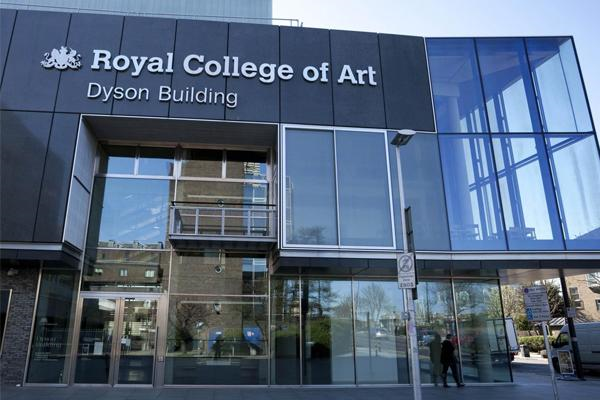So you want to study art or design in the UK. Maybe you love drawing, or fashion excites you, or you dream about creating graphics for big brands. The UK has some of the most famous art schools in the world, places that have shaped how we think about creativity and design. But here’s the real question: are they actually worth the money, time, and effort?
Let me walk you through what these universities offer, what they cost, and whether the investment makes sense. I’ll be honest about both the exciting parts and the challenging bits. Because choosing where to study art is a big decision, and you deserve the full picture.
Why the UK for Art and Design?
The UK has a long history of art and design education. We’re talking about countries that influenced fashion, graphic design, architecture, and contemporary art globally. London Fashion Week matters. British designers work for major brands worldwide. The museums in London alone could keep you busy for months.
UK art schools tend to be more experimental and concept-focused than schools in other countries. They encourage you to think about why you’re creating something, not just how to create it. This approach either clicks with you or it doesn’t. Some students thrive on the conceptual depth. Others find it frustrating and prefer more practical, hands-on training.
The connections are real, too. These schools have relationships with galleries, design studios, fashion houses, and creative agencies. Your tutors might be working artists or designers who know people in the industry. That network can open doors after graduation.
But let’s talk about money. UK universities are expensive, especially for international students. You’re looking at tuition fees that can range from £15,000 to £30,000 per year, depending on the school and program. Then there are living costs, which in cities like London can easily be another £12,000 to £15,000 per year. That’s a lot of money for a degree that doesn’t always lead to high-paying jobs right away.
Royal College of Art
The Royal College of Art in London is probably the most famous art school in the world. It’s postgraduate only, meaning you need a bachelor’s degree before you can apply. So if you’re just finishing secondary school, you’ll need to study somewhere else first.
Why am I mentioning it then? Because RCA represents the pinnacle of what UK art education can be. Understanding what makes it special helps you evaluate other schools. RCA focuses entirely on art and design at the highest level. The students are serious, the facilities are incredible, and the reputation opens doors globally.
Alumni from RCA include famous names in fashion, product design, sculpture, and more. The school’s emphasis on innovation and pushing boundaries attracts students who want to challenge themselves and redefine their fields. Classes are small, tutors are accomplished professionals, and you’re surrounded by people as passionate about creativity as you are.
But getting in is incredibly competitive. You need an outstanding portfolio, a clear vision for your work, and usually some professional experience. The cost is also steep, even by UK standards. For international students, you’re looking at around £30,000 per year just for tuition.
Is it worth it? If you get in and can afford it, probably yes. The RCA name carries weight worldwide. However, plenty of successful artists and designers never went there. It’s one path, not the only path.
University of the Arts London
UAL is actually six colleges under one university: Central Saint Martins, London College of Fashion, Chelsea College of Arts, Camberwell College of Arts, Wimbledon College of Arts, and London College of Communication. Each has its own identity and strengths.
Central Saint Martins is probably the most famous, known for fashion design and fine art. Alexander McQueen studied there. Stella McCartney, too. The fashion program is legendary, though getting in requires an exceptional portfolio and iron determination to survive the intensity.
London College of Fashion focuses specifically on fashion, obviously, but also includes fashion business, journalism, and marketing. If you love fashion but aren’t sure you want to be a designer, LCF offers alternative paths into the industry.
London College of Communication specializes in graphic design, photography, journalism, and media. In our digital age, these skills are increasingly valuable. The practical focus means you graduate with a portfolio that can actually get you hired.
UAL’s strength lies in this diversity. You’re part of a larger creative community while studying at a college focused on your specific interest. Cross-college projects and events expose you to different creative fields and perspectives.
The cost is high, around £22,000 to £25,000 per year for international students, depending on the program. Living in London adds significantly to expenses. You need to budget carefully and maybe work part-time, though that can be difficult to balance with intense coursework.
Glasgow School of Art
Glasgow School of Art has trained artists and designers since 1845. The building itself is architecturally significant, though parts were sadly damaged by fire recently. Despite this setback, GSA remains one of the UK’s top art schools.
Glasgow offers something different from London schools. The city is more affordable, the pace slightly slower, the creative community tight-knit. Students often describe a more supportive atmosphere compared to the competitive intensity of London.
The fine art program is particularly strong, emphasizing experimentation and conceptual development. Design program, including fashion, textiles, and product design,gn also has a solid reputation. Architecture at GSA is highly regarded, combining artistic vision with technical skill.
Scotland offers some financial advantages. The living costs in Glasgow are significantly lower than in London. Student accommodation is cheaper, food costs less, and going out doesn’t drain your wallet as quickly. This matters when you’re budgeting for three or four years.
Kingston University
Kingston University, just outside London, offers strong art and design programs with a more practical, less conceptual approach than some prestigious art schools. This appeals to students who want hands-on skills training alongside creative development.
The fashion program at Kingston is well-regarded in the industry. Unlike some schools focused purely on creative vision, Kingston emphasizes the business side of fashion and the practical skills you need to work in the industry. You learn pattern-making, garment construction, and how fashion businesses actually operate.
Graphic design and illustration programs are also strong, producing graduates who find work relatively easily. The curriculum balances creative exploration with technical skills and understanding of design’s commercial applications.
Kingston costs less than UAL or Goldsmiths, around £16,000 to £18,000 per year for international students. Being outside central London but still close to the city offers a good balance. You can access London’s opportunities without paying London prices for accommodation.
The campus feels more like a traditional university than a specialist art school. This has pros and cons. You might miss the intense creative atmosphere of a pure art school. But you also avoid some of the pretentiousness that can exist in those environments.
Goldsmiths, University of London
Goldsmiths has a reputation for producing artists who think differently. The fine art program in particular pushes conceptual boundaries and encourages experimental approaches. If you want to challenge conventional ideas about what art can be, Goldsmiths might resonate with you.
Many notable contemporary artists studied at Goldsmiths, including several Turner Prize winners. The school’s influence on contemporary art disproportionately outweighs its size. Something about the teaching philosophy produces artists willing to take risks and push boundaries.
The design programs, particularly in areas like design futures and creative computing, are innovative and forward-thinking. Goldsmiths seems less interested in training you for existing jobs and more focused on preparing you to create new possibilities.
This approach has drawbacks. The focus on concepts over skills means you might graduate without some practical abilities that employers want. You’ll need to supplement your education with self-taught technical skills or additional training. The curriculum assumes you’ll figure out the practical stuff yourself.
Located in New Cross, southeast London, Goldsmiths isn’t in the most glamorous area. The neighborhood is grittier and more diverse than central London, which some students find authentic and others find disappointing. Rent is cheaper than in Zone 1 or 2, which helps with costs.
Tuition for international students is around £20,000 per year. Cheaper than UAL but still substantial. The question is whether the conceptual education and prestigious name justify the cost for your particular goals and learning style.
Edinburgh College of Art
Edinburgh College of Art, part of the University of Edinburgh, combines specialist art education with the resources of a major research university. This hybrid model offers advantages you don’t get at standalone art schools.
The city itself is stunning. Edinburgh’s historic architecture, cultural festivals, and vibrant arts scene create an inspiring environment for creative students. The Edinburgh Festival Fringe, the world’s largest arts festival, happens every August, transforming the city into a celebration of creativity.
ECA’s programs span fine art, design, architecture, music, and art history. Being part of a larger university means you can take classes outside your department, access excellent libraries, and interact with students from other fields. This breadth can enrich your creative thinking.
The fine art program emphasizes studio practice and conceptual development. Design programs, including graphic design, illustration, and product design, balance creativity with practical skills. Architecture at ECA is highly regarded, benefiting from Edinburgh’s architectural heritage.
Tuition is similar to other Scottish schools, around £22,000 to £24,000 per year for international students. Edinburgh’s living costs fall between Glasgow’s affordability and London’s expense. You can live reasonably well without spending as much as you would in London.
Loughborough University
Loughborough might surprise you on this list. It’s primarily known as a technology and sports university, but the design programs are excellent, particularly if you’re interested in product design, industrial design, or design with technological applications.
What makes Loughborough different is the emphasis on design thinking and problem-solving applied to real-world challenges. Less about pure artistic expression, more about how design can solve problems and improve people’s lives. This approach appeals to students who want their creativity to have practical applications.
The facilities for design and technology are outstanding. You’ll have access to workshops, labs, and equipment that allow you to prototype and test your ideas. The teaching combines design thinking with technical skills, preparing you to work in industries that need designers who understand both aesthetics and functionality.
Located in the East Midlands, Loughborough is definitely not London. The town is small and quite quiet. You won’t have the cultural stimulation of major cities. But for focused study and building skills, the environment works well. Living costs are significantly lower than in London or Edinburgh.
Tuition for international students is around £23,000 per year, roughly in line with other good UK universities. The value proposition here is different from pure art schools. You’re getting design education with strong technical components, preparing you for careers in product development, automotive design, consumer goods, and similar fields.
What You Actually Learn
UK art and design education emphasizes critical thinking and conceptual development alongside practical skills. Expect lots of critique sessions where you present your work and receive feedback from tutors and peers. This can be uncomfortable at first, but it pushes your development.
The teaching style is less structured than in some countries. You’re expected to be independent, self-motivated, and proactive. Tutors guide rather than direct. Some students thrive with this freedom. Others struggle without more structure and clear expectations.
Portfolio development is central to most programs. You’ll constantly create work, experiment, refine your style, and build a body of work that represents your abilities and vision. By graduation, your portfolio should be strong enough to show employers or clients.
Technical skills training varies by school and program. Some schools assume you’ll learn techniques yourself while focusing teaching on concepts and critique. Others provide structured technical training. Research specific programs to understand their balance of skills versus concepts.
Group projects and collaborations are common, preparing you for professional realities where designers work in teams. You’ll also develop presentation skills, learning to explain and defend your creative decisions. These soft skills matter as much as design abilities.
Career Prospects After Graduation
Here’s where things get complicated. A degree from a prestigious UK art school opens some doors, but creative careers are unpredictable. Success depends on talent, persistence, networking, luck, and timing.
Some graduates go straight into jobs at design agencies, fashion houses, or creative departments of corporations. These positions offer steady income and benefits but may limit creative freedom. You’re creating what clients or employers want, not necessarily your own vision.
Others freelance, building their own client base. Freelancing offers flexibility and creative control but brings financial uncertainty. Income fluctuates, finding clients takes constant effort, and business skills matter as much as creative abilities.
Many artists and designers supplement creative work with teaching, retail jobs, or other employment. This isn’t failure; it’s reality for most people in creative fields. Building a sustainable creative career takes time, often many years.
Networking matters enormously in creative industries. The people you meet at university, the connections your tutors provide, and fellow students who become collaborators all influence your career trajectory. This is one reason why attending a well-connected school can be valuable.
Your portfolio matters more than your degree. Employers and clients want to see what you can actually create. A stunning portfolio from a less prestigious school will beat a mediocre portfolio from a famous institution every time. Focus on building strong work, not just collecting credentials.
Is it worth it?
So are UK art and design universities worth it? The answer depends on your circumstances, goals, and what you value.
If you can afford it without crushing debt, if you’re passionate about art or design, if you’ll take full advantage of opportunities and connections, if the conceptual approach appeals to you, then yes, these universities can be transformative.
If the cost will burden you with debt for decades, if you’re uncertain about your commitment to creative careers, if you prefer structured technical training over conceptual exploration, if you could achieve your goals through cheaper alternatives, then maybe the investment doesn’t make sense.
Visit schools if possible before deciding. Look at student work, talk to current students, explore facilities, and feel the atmosphere. Each school has a distinct culture. Finding the right fit matters more than choosing the most prestigious name.
Think carefully about which program matches your interests and career goals. Fashion design at the London College of Fashion is completely different from fine art at Goldsmiths. Research specific courses, not just universities.
Consider location beyond just the school’s reputation. Could you handle Glasgow’s weather? Would London’s intensity energize or exhaust you? Do you want a big city or a smaller town? Where you live affects your well-being and success.
Be realistic about career prospects in your chosen field. Research what graduates actually do after finishing their degrees. Talk to people working in roles you want. Understand the financial realities before committing to expensive education for uncertain careers.
Conclusion
UK art and design universities offer world-class creative education with history, prestige, and connections that can launch your career. The teaching encourages conceptual thinking and artistic risk-taking. The cities and cultural environments inspire creativity.
But the costs are real, the career paths uncertain, and success requires more than just attending a famous school. You need talent, determination, business sense, and often some luck. A degree helps but doesn’t guarantee anything.
Only you can decide whether the investment makes sense for your situation. Think hard about what you want from your education and career. Research thoroughly. Consider alternatives. Talk to people who’ve walked this path.
If you do choose this route, commit fully. Take advantage of every opportunity, build relationships, develop your skills, create constantly, and prepare for a challenging but potentially rewarding creative career. The value you get from these universities depends largely on what you put into the experience.
Whatever you decide, pursue your creative interests seriously. Whether through formal education, self-teaching, or alternative paths, developing your artistic or design abilities can lead to a fulfilling life and career. The specific route matters less than your dedication to the journey.





